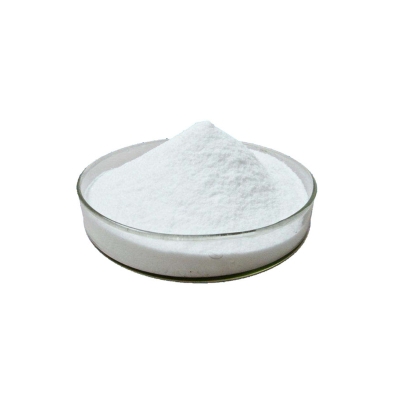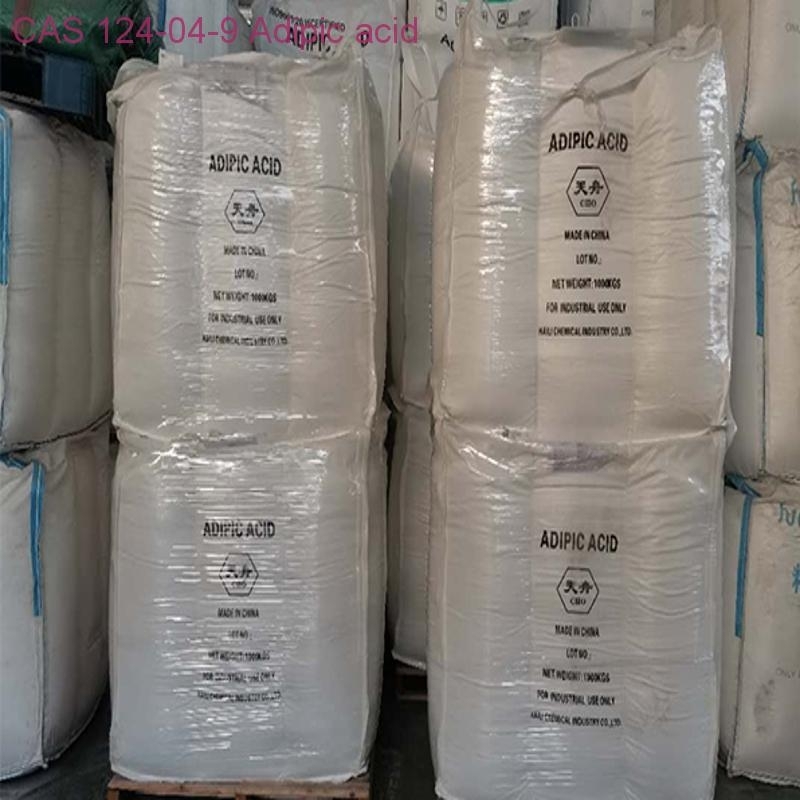-
Categories
-
Pharmaceutical Intermediates
-
Active Pharmaceutical Ingredients
-
Food Additives
- Industrial Coatings
- Agrochemicals
- Dyes and Pigments
- Surfactant
- Flavors and Fragrances
- Chemical Reagents
- Catalyst and Auxiliary
- Natural Products
- Inorganic Chemistry
-
Organic Chemistry
-
Biochemical Engineering
- Analytical Chemistry
-
Cosmetic Ingredient
- Water Treatment Chemical
-
Pharmaceutical Intermediates
Promotion
ECHEMI Mall
Wholesale
Weekly Price
Exhibition
News
-
Trade Service
Editor's note: At present, more and more people have a deep experience of contracting the new crown virus, and there are different degrees of discomfort such as fever, cough, fatigue, and sore throat
.
So, how do people eat after being infected with the new coronavirus? How can I arrange my diet to help reduce symptoms and help me recover faster? Based on the theory of homology between medicine and food, industry experts give targeted dietary advice
based on food attributes and common symptoms of new coronavirus infections.
During the recovery period, there are methods of dietary therapy
Professor Jia Weigang, an expert of the Chinese Food Think Tank, vice chairman of the Emergency Medicine Branch of the Chinese Association of Ethnic Medicine, director of the Institute of Integrated Traditional Chinese and Western Medicine of the Heilongjiang Academy of Chinese Medicine, director of the Emergency Department of Nangang Campus, and master supervisor, proposed a diet conditioning strategy
from the perspectives of new crown clinical manifestations, TCM symptoms and differentiation, prevention and treatment strategies, tea drinking, and dietary therapy.
Jia Weigang introduced that the main symptoms of infection with the new crown virus are upper respiratory tract infections, and the overall assessment is similar to having a "severe cold"
.
The reason for the severe symptoms and long course of the disease is related to
the excessive use of cold Chinese medicine in the early stage, but not the use of dispersing cold and dissolving table, and dissolving turbidity and opening the secret.
From the perspective of TCM symptoms, new crown patients have a fat tongue and a pale white tongue, followed by a light purple tongue, and less red tongue; There are more white moss and less yellow moss; The proportions of thick moss, thin moss, and thin moss are basically the same; There are many dry tongues, and less
moist tongues.
According to clinical experience, Jia Weigang mainly divided the constitution of new crown patients into three categories: first, physical deficiency (lung qi deficiency), which is easy to catch a cold, lingering for a long time, and weak and weak; The second is heat poison (turbid poison), which is afraid of heat, easy to get on fire, moss yellow, and the heat is heavy and cold when the onset occurs; The third is cold and wet, usually afraid of cold, cold hands and feet, cold stomach, can not cool food, hot and cold, head and body cold
pain.
According to this, targeted prevention and treatment strategies are formulated, that is, classification (constitution), stratification (degree), symptomatic classification (clinical manifestations), differential treatment, and flexible medication
.
Based on the above strategies, Jia Weigang classified
the use of medicinal and food homologous substances that can be used to prevent and treat infection.
People with sore throat can use peppermint, perilla leaves, white pycnogenol, patchouli, bellflower, dandelion, sea buckthorn, fat sea
.
Coughers can use monk fruit, almonds, orange red, perilla leaves, white fruit
.
Those with weak physique can use astragalus, codonopsis, American ginseng, dogwood, malt, and pink arrow
.
People with heat poison constitution (including children) can use dandelion, chicory, purslane, sea buckthorn, honeysuckle, houttuynia corido, fresh asparagus.
People with cold and wet physique can use white white, perilla leaves, white pygmy, lotus, bellflower, mulberry leaves, star anise, grass fruit
.
People with cold pain can use kudzu, white pygmy, galangal, star anise, cloves
.
Those who are still afraid of cold during the recovery period can use cloves, peppercorns, galangal, cumin, and cubeb
.
Jia Weigang suggested that for the prevention and treatment of infection at this stage, the dietary treatment method that can be used - ginger white sugar water can help improve symptoms
.
Ingredients: 5g ginger, sugar to taste, 1500ml
water.
Method: Fry for 5 minutes, 2 times a day, or temporarily add 1 time
before going out.
It can be taken
frequently during the onset of the disease.
This method can not only activate the human immune function, prevent the invasion of viruses, but also dissipate the inhibited yang qi, and help patients improve symptoms such as cold intolerance, head and body pain, dry throat and tightness, and dizziness; For those who have deficiency of qi and sweat after long-term service or illness, you can add 15 grams of astragalus and 5 grams
of huangjing.
For tea drinkers, you can add 5 grams of ginger when boiling Pu'er tea, and sip it, which can play a role in dissipating yang qi, detoxifying and dissolving dampness, and then temporarily strengthening immune function, and the taste is better
.
For those with obvious sore throat, especially knife-like pain, Jia Weigang believes that this is caused by the invasion of dry cold and the loss of warmth in the clear road, and it is necessary to use the treatment method of dispersing cold and opening the throat to be effective
.
The dietary treatment he recommended was: 2 small kumquats, 3 grams of mint, a small amount of rock sugar, 1000 ml of water, boil for 3-5 minutes
.
Take
2 times a day or frequently.
A pronounced severe cough occurred 3-4 days after the infection and lasted for 7-10 days
.
Jia Weigang suggested that while clearing the wind and lungs, suppressing cough and phlegm, it is necessary to take good care of the lung yin and restore the normal publicity and suppression function as soon as possible, in order to promote recovery, shorten the course of the disease, and reduce the occurrence of
adverse events.
Here, he recommends 2 dietary remedies
for cough.
1.
Add 2 grams of Sichuan shellfish flour and an appropriate amount of rock sugar to 1 pear, steam for 15-20 minutes, and take orally or frequently twice a day
.
2.
10 grams of monk fruit, 10 grams of almonds, 5 grams of ginger, 1000 ml of water, decoction for 10-15 minutes, oral or frequent consumption
twice a day.
As for dietary precautions, Jia Weigang suggested that it is important to eat modestly and ensure that three meals a day are eaten
regularly.
You can usually drink more warm and hot water
at 50-55°C.
Healthy adults can increase their water intake by 1000-1500 ml compared with usual, or increase the frequency of urination 2-3 times a day, that is, they can meet the requirement
of polydipsia.
For patients with nausea, loss of appetite and decreased sense of taste, you can appropriately increase salty, spicy, sour, spicy and other flavored dishes, or eat personal favorite foods in moderation to maintain nutritional balance, promote appetite enhancement, and improve gastrointestinal symptoms
.
For patients with decreased sense of taste and loss of appetite, Jia Weigang recommends - cabbage radish black pepper soup to detoxify and disperse cold qi
.
This meal is easy to prepare and can be flexibly applied
according to personal eating habits and cooking habits.
Combined with the disease characteristics, psychological performance, living conditions and other aspects of the new crown infected people, Jia Weigang formulated a set of dietary therapy programs
.
Monday: Barley, Su leaf, red bean porridge, according to the taste, each serving according to the proportions of 2-4 grams of licorice, to dispel dampness and disperse cold
.
Tuesday: Yam, Bai Zhi, pumpkin porridge, according to the taste, according to the proportion, add some 2-4 grams of ginger per serving, aiming to remove dampness and open the trick.
Wednesday: Porridge with ginseng, plum and glutinous rice, 3 grams of ginseng and 2 grams of plum per serving, aiming to strengthen the spleen and sharpen the throat
.
Thursday: Lotus seed licorice rock sugar soup, add 2 grams of dried lotus seed heart (soaked in water to soften), 2 grams of licorice per serving, add 2-4 grams of rock sugar according to the taste, and boil for 5 minutes, aiming to strengthen the spleen, depress, appetizing and calming the mind
.
Friday: Barley, bellflower, red bean porridge, according to the taste, according to the proportion, add 2-4 grams of licorice per serving, aiming to dispel dampness, throat sharpening, and cough
.
Saturday: Porridge with ginseng, plum and glutinous rice, add 3 grams of ginseng and 2 grams of plum per serving, aiming to strengthen the spleen and sharpen the throat
.
Sunday: Barley, almonds, red bean porridge, according to the taste, proportionally add 2-4 grams of licorice per serving, aiming to dispel dampness and relieve cough
.
(Yi Xiaofeng)
China Food News(December 29, 2022, Version 06)
(Responsible editor: Zhu Meiqiao)







